A modern organization runs on its technology — but only when it has full visibility into every device, connection, and system that keeps operations running. As networks grow and evolve, that visibility becomes harder to maintain. Spreadsheets go out of date overnight, and manual tracking leaves teams reacting to issues instead of preventing them.
That’s why having a real-time, connected inventory of your IT assets is no longer optional — it’s essential. Modern network inventory software replaces static lists with living data, automatically mapping your infrastructure and surfacing insights before problems turn into downtime.
This article breaks down what defines next-generation network inventory software, from automated scanning to built-in compliance and security features. You’ll also find a detailed comparison of the top platforms shaping 2026, helping your team choose the system that delivers control, clarity, and confidence at scale.
Key takeaways
- Move beyond simple lists: effective network inventory is not merely a static list of equipment; it must be a dynamic, automated map of your entire IT environment that feeds real-time data directly into service, security, and compliance workflows.
- Automation is non-negotiable: relying on manual spreadsheets introduces too much risk. Automated scanning is essential for maintaining a clear, continuously updated inventory, providing instant alerts, and eliminating audit-day surprises.
- Foundation for security and compliance: a real-time inventory serves as the foundational playbook for IT security. It enables teams to quickly identify vulnerabilities, accelerate incident response, and maintain an audit-ready state year-round.
- Integration over isolation: the best platforms avoid creating data silos. They are designed to seamlessly integrate network asset data with your core ITSM/service desk workflows, transforming reactive troubleshooting into proactive service delivery.
- Focus on strategic ROI: the platform must drive measurable Return on Investment (ROI). By optimizing asset lifecycles, eliminating redundant costs, and improving capacity planning, the software helps transform IT from a cost center into a strategic, data-driven asset.
Network inventory software: definition and value
Network inventory software serves as a definitive, automated map of your IT environment, discovering and tracking every device and application connected to your network. This process consolidates scattered data points into a single, clear view of all IT assets, creating a powerful command center for informed decision-making. It allows your team to operate based on a real-time, accurate picture of the network, not on outdated assumptions.
Beyond simple asset enumeration, this technology provides a strategic advantage for protecting operations and managing budgets. Proactively identifying unauthorized devices, ensuring license compliance, and eliminating redundant costs become systematic processes rather than reactive emergencies. This strategic shift moves teams from a constant state of firefighting to one of preventative and efficient management.
With platforms like monday service, network inventory is not a separate chore. It is woven directly into everything we do. Asset data instantly connects to service tickets, compliance workflows, and analytics, all in one place. This means we stop switching between tools and start seeing the full picture, helping the entire team move faster and work smarter.
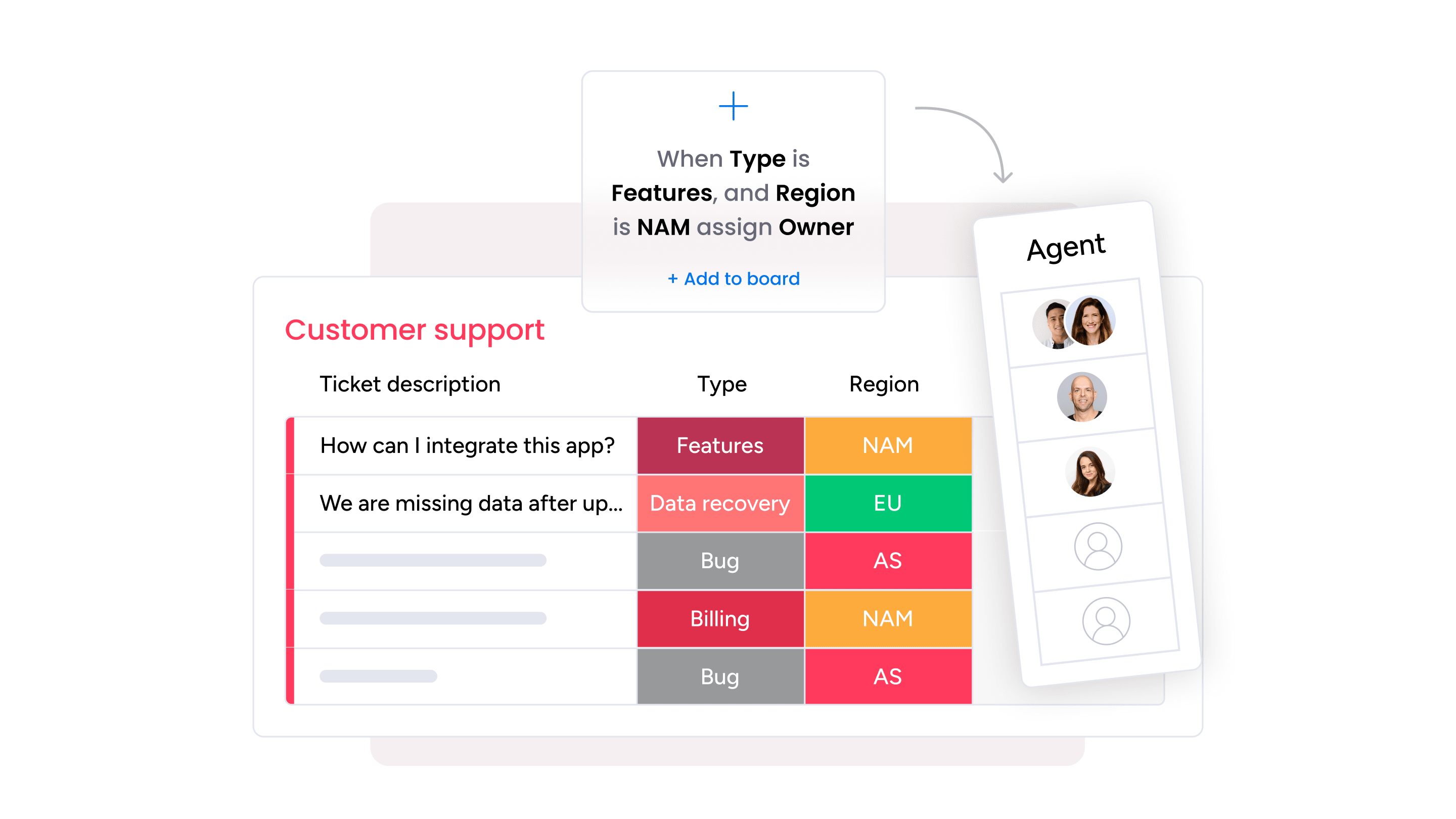
From data to action: must-have features of a modern inventory platform
A superior network inventory platform is the operational core that enables smarter, more efficient teamwork. The true objective is to move from passive asset tracking to a dynamic system that actively enhances team performance and visibility.
A single source of truth that provides a comprehensive, real-time view of every asset is fundamental. Proactive alerts can preempt issues before they escalate, while powerful analytics turn vast amounts of data into clear, actionable insights for immediate use. This capability transforms IT teams from reactive problem-solvers into strategic, proactive partners.
The ideal platform should make managing the entire network intuitive, regardless of scale, from a handful of devices to thousands. It must be engineered to grow with your organization, not add to its workload. The following core capabilities are what elevate IT operations into a high-performing, well-oiled machine.

The power of automated scanning in network inventory
Manually tracking network assets with spreadsheets is an inefficient battle, especially as an organization scales. Inevitable inaccuracies and omissions result in an outdated and incomplete picture of the network’s true state. Automated scanning is the essential tool that transforms this chaos into a clear, continuously updated inventory without the manual grind.
This technology acts as a digital scout, constantly exploring the network to identify and catalog every connected device. It operates quietly in the background to maintain a fresh asset list, issuing instant alerts for events like a new laptop joining the network or an old server being retired. This constant vigilance eliminates audit-day surprises and provides complete, uninterrupted visibility.
Automated scanning does more than just populate a list; it empowers teams with the deep insights needed to resolve issues with exceptional speed. By integrating this live inventory directly into a platform like monday service, assets are linked to service workflows. This connection accelerates resolutions, streamlines operations, and ensures the entire organization runs smoothly.
Ensuring security and compliance with network software inventory
A robust network inventory is far more than just a list of devices; it serves as the foundational playbook for maintaining a secure and smoothly running operation. Having a clear, real-time picture of every asset allows teams to address security threats and compliance checks with confidence, transforming potential chaos into controlled, calm execution.
The ability to maintain security and compliance relies on several core inventory capabilities:
- Vulnerability detection and response: your inventory becomes the central point for identifying vulnerabilities and enabling a lightning-fast incident response. Platforms are designed to connect asset data directly into incident workflows, equipping everyone with the necessary context to resolve issues quickly.
- Proactive security posture: this integration shifts the team from a reactive posture to a proactive one, allowing IT professionals to stay ahead of potential threats.
- Seamless compliance: automated record-keeping and real-time reporting ensure an audit-ready state can be maintained year-round, transforming compliance from a stressful, deadline-driven event into a seamless and integrated part of daily work.
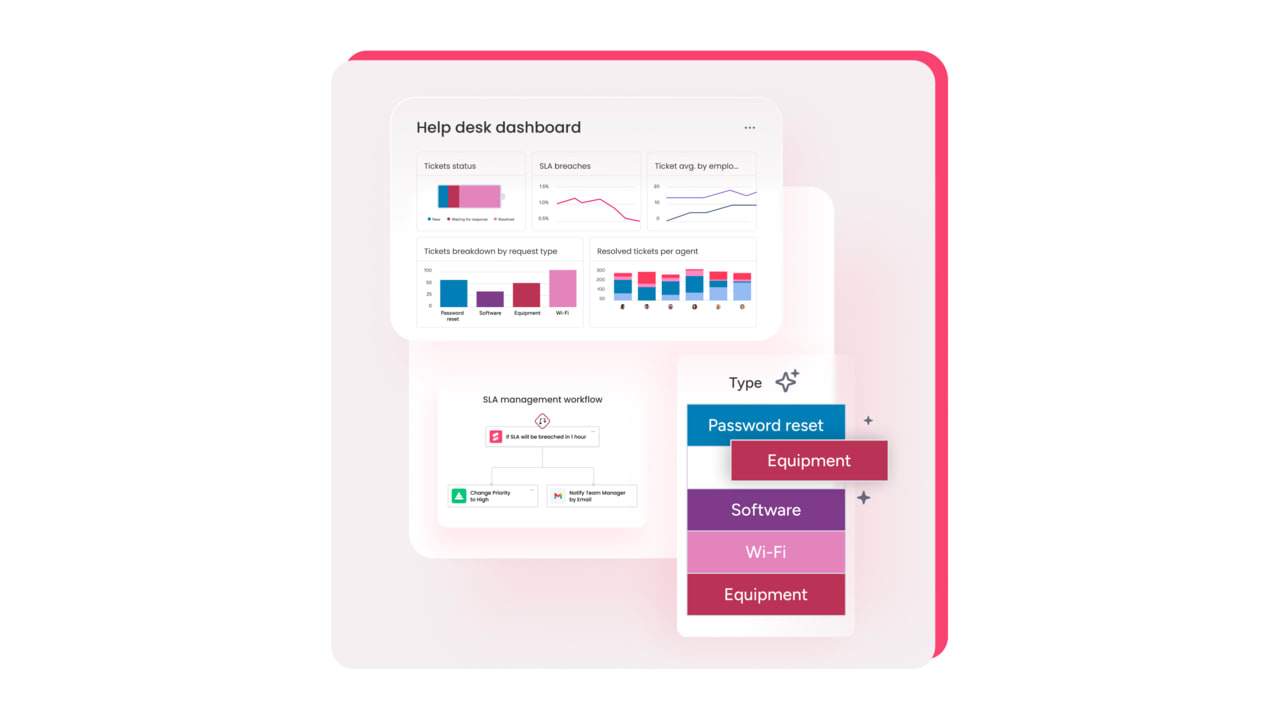
How to choose a network inventory management system for multi-vendor environments
Modern IT environments are inherently heterogeneous, comprising a mix of technologies from numerous vendors. Achieving interoperability between equipment from Cisco, Dell, and other manufacturers requires a tool that can communicate universally across this diverse landscape.
Relying on basic gear specifications is strategically insufficient; the industry requires a central system that unifies disparate teams and tools. An effective platform transcends mere asset tracking: it actively streamlines collaboration and supports organizational growth by connecting all information without introducing new complexities or operational friction.
This is an area where platforms like monday service provide significant value, offering a single, clear view across the entire technology landscape. Their flexible architecture is designed to adapt to unique workflows rather than imposing a rigid structure. This allows for the management of everything, from brand-new servers to legacy equipment, all within one consolidated platform.
Comparing leading network inventory tools
It’s easy to get lost in feature-by-feature comparisons of network inventory software. The critical question, however, is whether a tool simply lists your assets or actively connects them to your team’s broader operational workflows. Many tools stop at cataloging, creating a data silo that hinders service operations.
While plenty of tools can effectively map a network and track equipment, they often operate in isolation. This leaves your team to manually piece together information when a service ticket arrives or a change request is made. Such a siloed approach is inefficient and fails to scale with organizational needs.
Below we give you the run down on the best network inventory tools you should consider in 2026:
1. monday service
monday service integrates network inventory management directly into complete service delivery operations, empowering IT teams to build custom inventory systems without coding. This makes the platform ideal for organizations that require flexibility beyond the constraints of rigid, pre-built solutions.
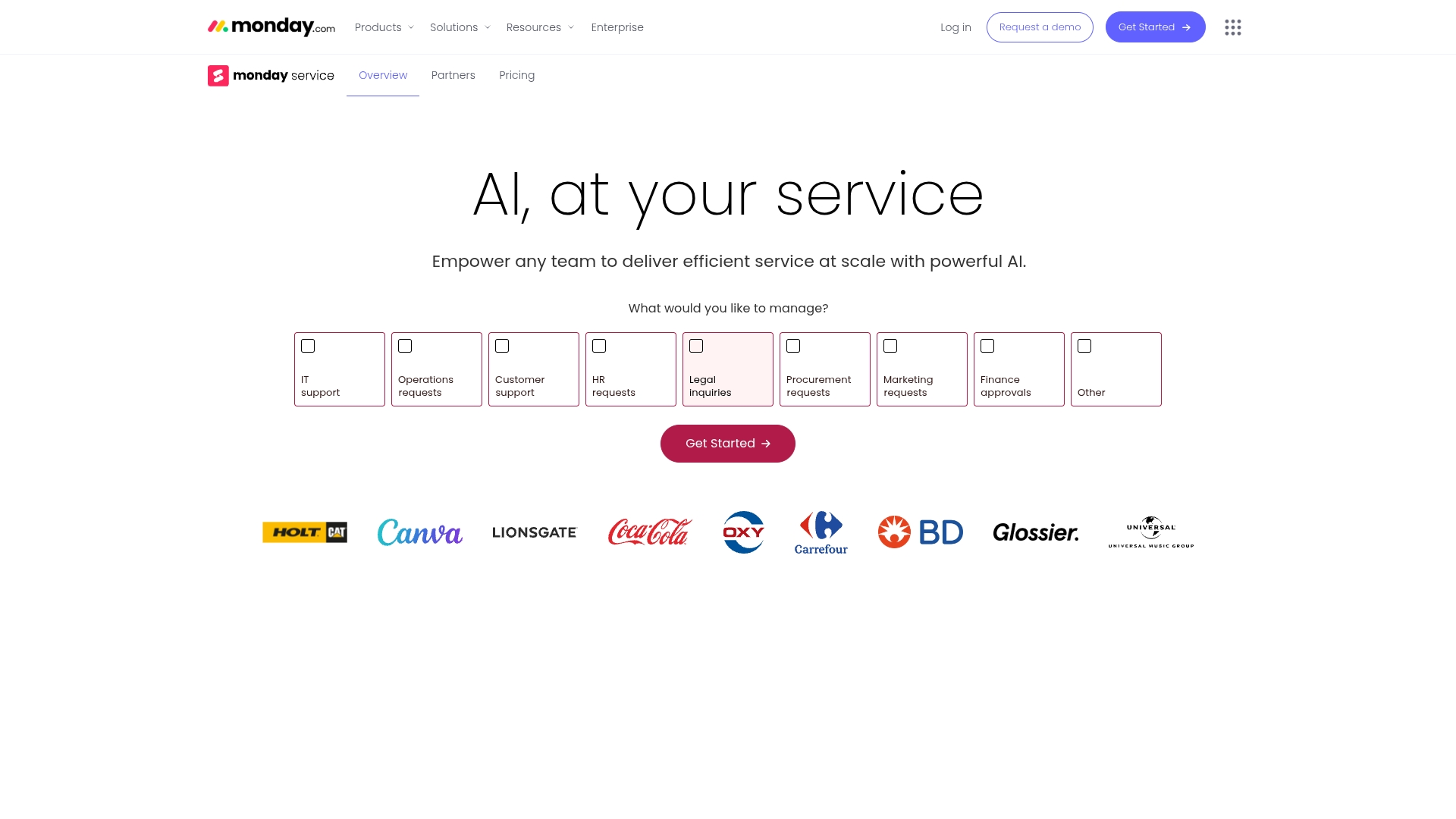
Example: monday service provides a customizable Work OS that allows IT teams to create tailored network inventory systems that integrate seamlessly with broader service management operations.
Key features:
- Customizable boards and templates: for tracking network devices by type, location, status, and maintenance schedules.
- AI-powered automation: for ticket handling, asset lifecycle management, and predictive maintenance alerts.
- QR code generation: for physical assets with centralized data hubs connecting to 72+ enterprise systems.
Pricing:
- Free: $0 forever (up to two seats, three boards, basic features).
- Basic: $9/month per seat billed annually (unlimited items, 5GB storage, priority support).
- Standard: $12/month per seat billed annually (timeline views, automations, integrations up to 250 actions/month).
- Pro: $19/month per seat billed annually (private boards, time tracking, 25K actions/month).
- Enterprise: contact sales (portfolio management, enterprise-scale automations up to 250K actions/month).
Why it stands out:
- No-code customization: lets teams build exactly the inventory system they need without technical expertise
- Workflow integration: connects network inventory directly to service delivery workflows, creating a single source of truth for IT operations.
- Predictive maintenance: AI capabilities predict asset failures and optimize maintenance schedules, successfully moving teams from reactive to proactive management.
2. ServiceNow
Through its comprehensive Configuration Management Database (CMDB) and IT Operations Management suite, ServiceNow provides enterprise-scale network inventory capabilities. The platform prides itself on creating a unified “single source of truth” for all IT assets and their relationships, making it ideal for large enterprises managing complex, interconnected network infrastructures.
It is built for organizations that need deep integration across IT service management, security operations, and workflow automation.
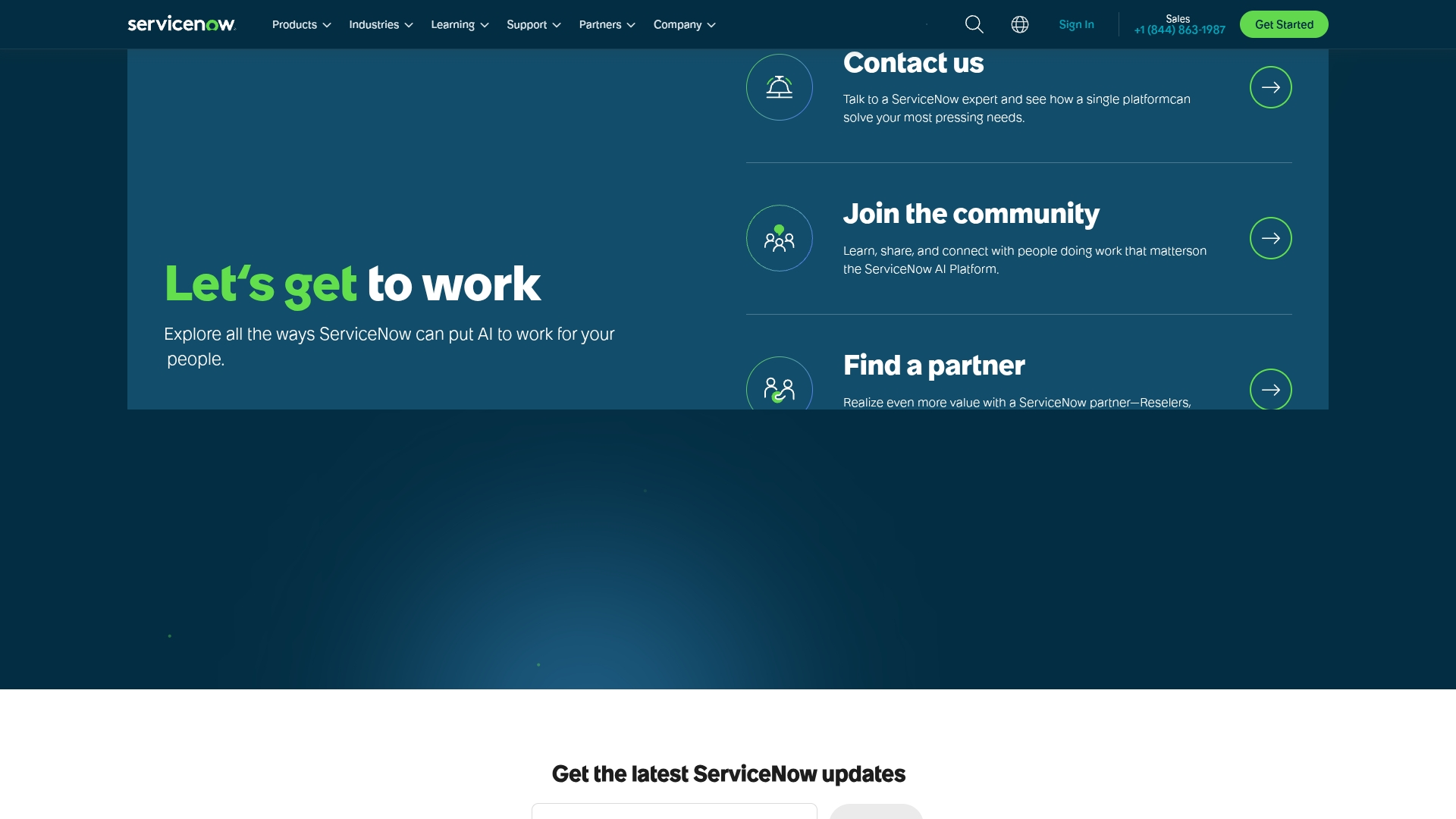
Example: ServiceNow consolidates network inventory data within its CMDB to provide a holistic view of IT landscapes while seamlessly integrating with broader workflow automation tools for enterprise-wide management.
Key features:
- Automated agentless discovery: discovers network devices automatically using protocols like SNMP and SSH.
- Comprehensive dependency mapping: visualizes relationships between network components and business services.
- Specialized Telecommunications Network Inventory (TNI) solution: designed specifically for communication service providers.
Pricing:
- Custom pricing: based on detailed evaluation of organizational needs.
- Flexible packages: available for all stages of business growth.
- Pricing information: contact ServiceNow directly for accurate quotes tailored to specific requirements.
Considerations:
- Implementation complexity and costs: can be challenging for smaller organizations.
- Steep learning curve: requiring specialized skills and dedicated resources to manage effectively.
3. Jira Service Management
Jira Service Management leverages its powerful Assets feature to create a unified CMDB that connects asset data directly to service operations. The platform’s strength lies in its seamless integration with the broader Atlassian ecosystem, making it an excellent choice for development and IT teams already using Jira Software. This native integration eliminates the need for separate, poorly integrated asset management tools.
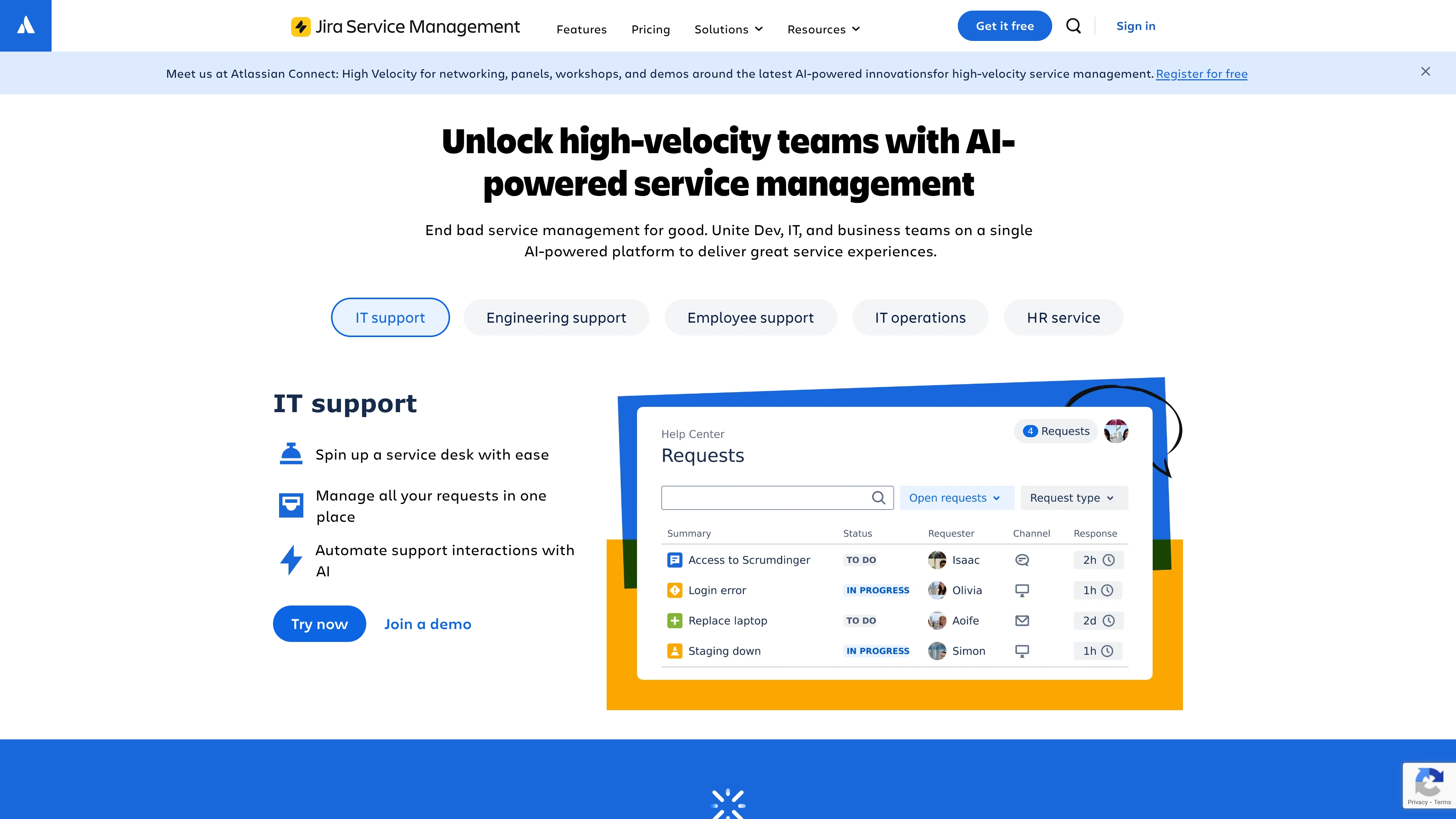
Example: Jira Service Management’s Assets feature provides a centralized configuration management database that automatically discovers network devices and links asset information directly to service requests, incidents, and changes for faster resolution times.
Key features:
- Automated network discovery tool: scans local networks to detect hardware and software assets without requiring agents.
- Flexible object schema: that organizes assets in customizable hierarchies with detailed attribute tracking for different device types.
- Native integration with Jira workflows: allowing asset data to be directly linked to support tickets and change requests.
Pricing:
- Free: $0/month for up to 10 users with 2 GB storage.
- Standard: $7.53/user/month with 250 GB storage and up to 100,000 users.
- Premium: $13.53/user/month with unlimited storage and 99.9% uptime SLA.
- Enterprise: contact sales for custom pricing with 99.95% uptime SLA.
Considerations:
- Cost barrier: full asset management capabilities are only available in Premium and Enterprise plans, making the platform costly for smaller organizations.
- Discovery limitation: the native discovery tool is primarily focused on local networks, which may limit broader network visibility compared to specialized discovery solutions.
4. Zendesk
Instead of offering native asset management, Zendesk functions as a centralized customer service hub that integrates with specialized network inventory tools. The platform excels at creating unified workflows where IT asset data from third-party solutions flows directly into support tickets. This makes it ideal for organizations that want flexibility in choosing their preferred inventory management solution while maintaining a streamlined service experience.

Example: Zendesk serves as a central service desk that connects with third-party IT Asset Management tools to provide support agents with immediate access to network inventory data within their ticket workflow.
Key features:
- Integration marketplace: with nearly 1,500 third-party applications including specialized ITAM and network management tools.
- Unified ticket interface: displays asset information directly within support requests.
- AI-powered automation and routing: to streamline incident resolution with asset context.
Pricing:
- Support Team: $19 per agent/month (billed annually) or $25 per agent/month (monthly billing).
- Suite Team: $55 per agent/month (billed annually) or $69 per agent/month (monthly billing).
- Suite Professional: $115 per agent/month (billed annually) or $149 per agent/month (monthly billing).
- Suite Enterprise: $169 per agent/month (billed annually) or $219 per agent/month (monthly billing).
Considerations:
- Additional requirements: requires separate third-party software for actual network inventory management, increasing total cost of ownership.
- Quality of asset management: depends entirely on the chosen integration partner rather than native Zendesk capabilities.
5. Freshservice
With integrated network inventory capabilities, Freshservice offers a comprehensive IT service management solution that automatically discovers and tracks an entire IT infrastructure. The platform combines a user-friendly design with powerful automation, making it well-suited for mid-market organizations seeking robust asset management without the complexity of enterprise-grade solutions. Its seamless integration between network discovery and service desk operations creates a unified approach to IT support.
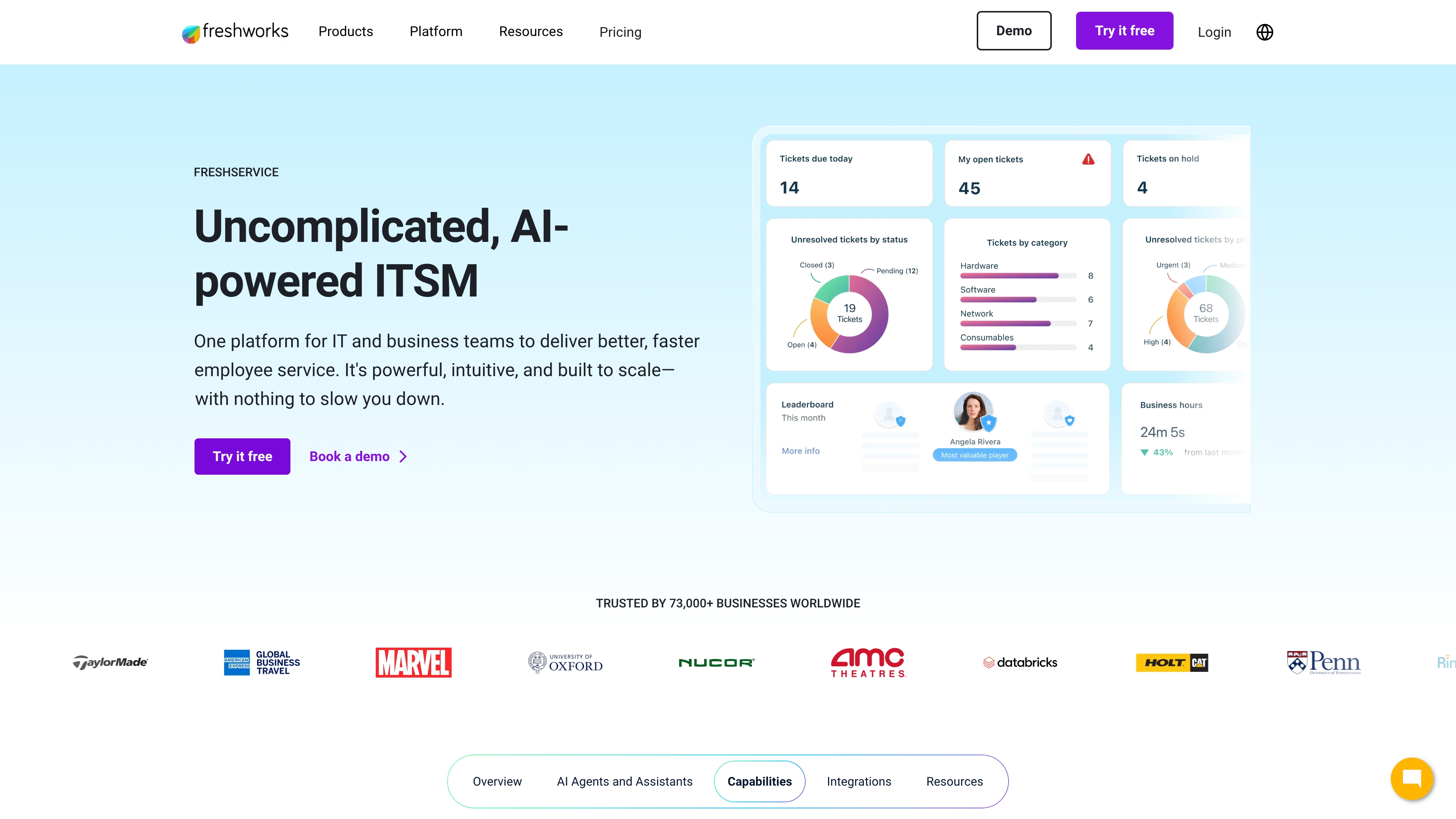
Example: Freshservice provides a centralized platform for organizations to manage their complete IT infrastructure through automated discovery, asset lifecycle management, and integrated service delivery processes.
Key features:
- Automated network discovery: uses both agentless probes and lightweight agents to scan and identify hardware, software, and network devices across your infrastructure.
- Integrated CMDB: that automatically populates discovered assets as configuration items, enabling dependency mapping and relationship tracking between IT components.
- Mobile inventory management: with barcode and QR code scanning capabilities for managing non-networked assets on-the-go.
Pricing:
- Several pricing tiers: available.
- Pricing information: visit official Freshservice website.
- Asset limits: apply to certain plans, with additional costs for managing larger inventories.
Considerations:
- Discovery limitations: discovery tools may not capture every device in extremely large or complex network environments. Additionally, the Windows server requirement for the Discovery Probe could limit organizations using other server platforms.
- Performance and reporting: reporting capabilities for asset management are less customizable than some users prefer, and the platform can experience performance slowdowns as more features are added.
6. Asana
Asana adapts its project management framework to accommodate basic asset tracking needs, excelling at turning static inventory lists into dynamic, actionable projects. This allows teams to assign ownership, track maintenance schedules, and manage equipment lifecycles within a collaborative environment.
While not a dedicated network inventory solution, Asana’s flexibility makes it a solid choice for organizations already using the platform for simple asset management.
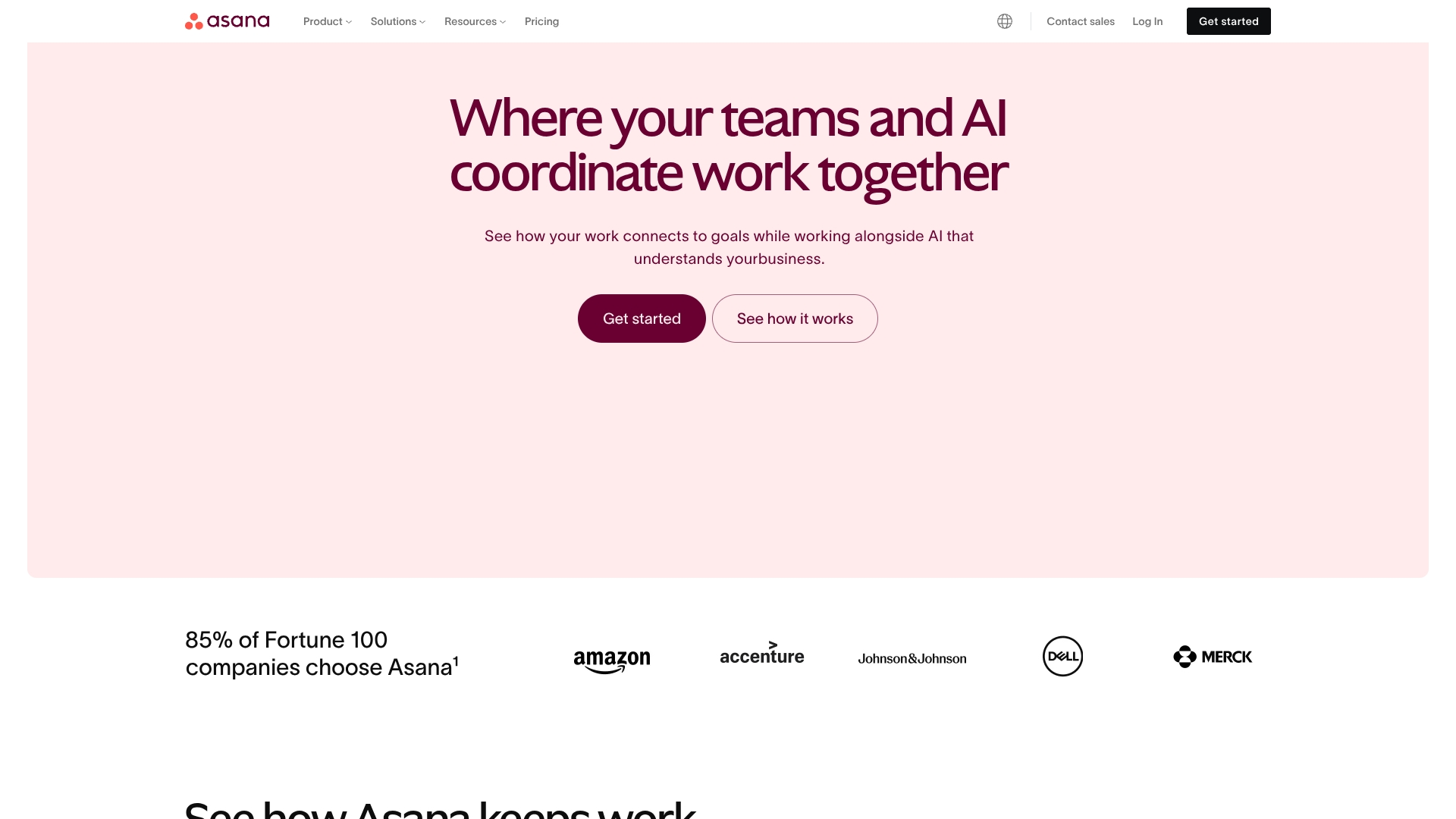
Example: Asana provides a workflow-based approach to inventory management, treating network assets as collaborative projects rather than static database entries.
Key features:
- Custom fields: for tracking asset details like serial numbers, IP addresses, and warranty information.
- Automated rules: for maintenance scheduling and low-stock alerts.
- Integration capabilities: with specialized network monitoring tools like NetCrunch.
Pricing:
- Personal: free forever for up to 10 teammates.
- Starter: $10.99/user/month (billed annually), $13.49/user/month (billed monthly).
- Advanced: $24.99/user/month (billed annually), $30.49/user/month (billed monthly).
- Enterprise: contact sales for custom pricing.
- Enterprise+: contact sales for custom pricing.
- 50% nonprofit discount: available on Starter and Advanced annual plans.
Considerations:
- Missing core features: lacks automated network discovery and real-time monitoring capabilities that dedicated network inventory platforms provide.
- Additional requirements: requires manual data entry and updates, making it time-intensive for large or complex networks.
7. Wrike
Wrike’s project management system can be customized for basic inventory tracking, specializing in high scalability for teams wanting to integrate asset management into existing project workflows. While not a dedicated network inventory solution, Wrike’s flexible framework allows organizations to create custom tracking systems that align with their broader operational processes.
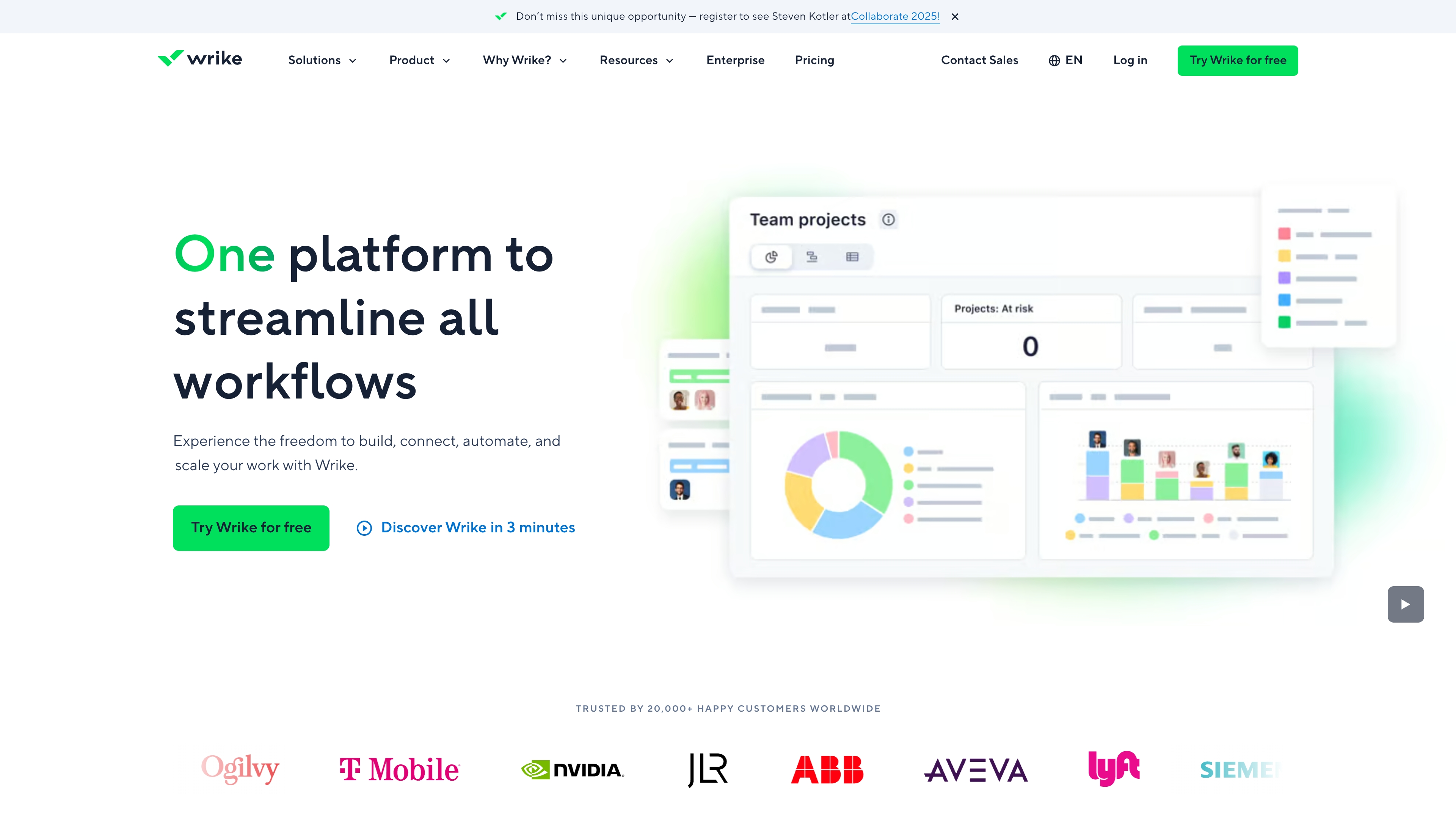
Example: Wrike serves organizations already using project management tools who want to extend their platform capabilities to include basic asset and inventory tracking without investing in separate specialized software.
Key features:
- Custom asset profiles: features custom item types and fields for creating tailored asset profiles that include device information, locations, and maintenance schedules.
- Visual status tracking: uses Kanban boards and calendar views for visual tracking of asset status across the lifecycle, from procurement to deployment to maintenance.
- Workflow efficiency: includes automated workflows and bulk import capabilities for streamlined asset lifecycle management and data entry.
Pricing:
- Free: $0/month for teams getting started with basic project management features.
- Team: $10/user/month (billed annually) for small teams with unlimited projects and basic automations.
- Business: $25/user/month (billed annually) for organizations needing advanced features like approvals and resource planning.
- Enterprise: custom pricing with enhanced security features and increased automation limits.
- Pinnacle: custom pricing for complex work needs with advanced reporting and budgeting capabilities.
Intelligent automation: leveraging AI for a predictive IT service desk
AI in network inventory management is facilitating a shift from tedious manual counts to intelligent, predictive systems. This evolution allows teams to get ahead of issues rather than merely reacting to them, freeing up valuable time for more strategic initiatives. The focus becomes working smarter, not just harder.
AI transforms the system from a simple inventory tracker into an intelligent entity that truly understands its assets. It can flag hardware nearing its failure point or identify an unauthorized device attempting to connect to the network. This is the power of intelligent automation, which handles the tedious sorting and organizing so your team can concentrate on securing the network and ensuring operational continuity.
By integrating this intelligence directly into daily workflows, modern platforms like monday service help transform mountains of data into clear, actionable insights. These insights guide your team’s next move, turning the service desk from a reactive fire department into the strategic heart of your operations, fully prepared to scale with confidence.

A unified approach to network and service management
Network inventory functions most effectively as an integrated component of a larger system, not as a standalone tool. Connecting network assets directly to service operations unlocks a new level of efficiency that fundamentally transforms support delivery.
With this integration, the support team can instantly see the specific router causing an outage, and service requests automatically link to the correct assets. This unified view changes the dynamic from reactive firefighting to proactive, data-driven service delivery, enabling everyone to stay ahead of potential issues.
This integrated system consolidates these functions into one intuitive workspace. With platforms like monday service, your team gains a single system to manage everything from device lifecycles to incident resolution, representing a simpler, smarter way to operate that scales seamlessly with your team’s success.
Driving growth with reliable network hardware inventory
To build a successful future, an organization first needs a crystal-clear map of its current state. A reliable hardware inventory provides this strategic baseline, offering a complete picture of all current assets so the path forward can be charted with confidence. It is the essential foundation for smart, sustainable growth.
This process transforms a simple asset list into a strategic playbook for success by offering three core benefits:
- Strategic visibility: provides teams with immediate clarity on what assets they have, how they are being used, and when they require attention.
- Proactive enablement: transforms operations from reactive troubleshooting to proactive team enablement, helping the organization get ahead of the curve.
- Smarter decision-making: unlocks confident capacity planning, optimizes budgets by maximizing asset lifecycles, and enables the early identification of potential risks.
Ultimately, this equips teams with the real-time data needed to fuel growth with confidence.
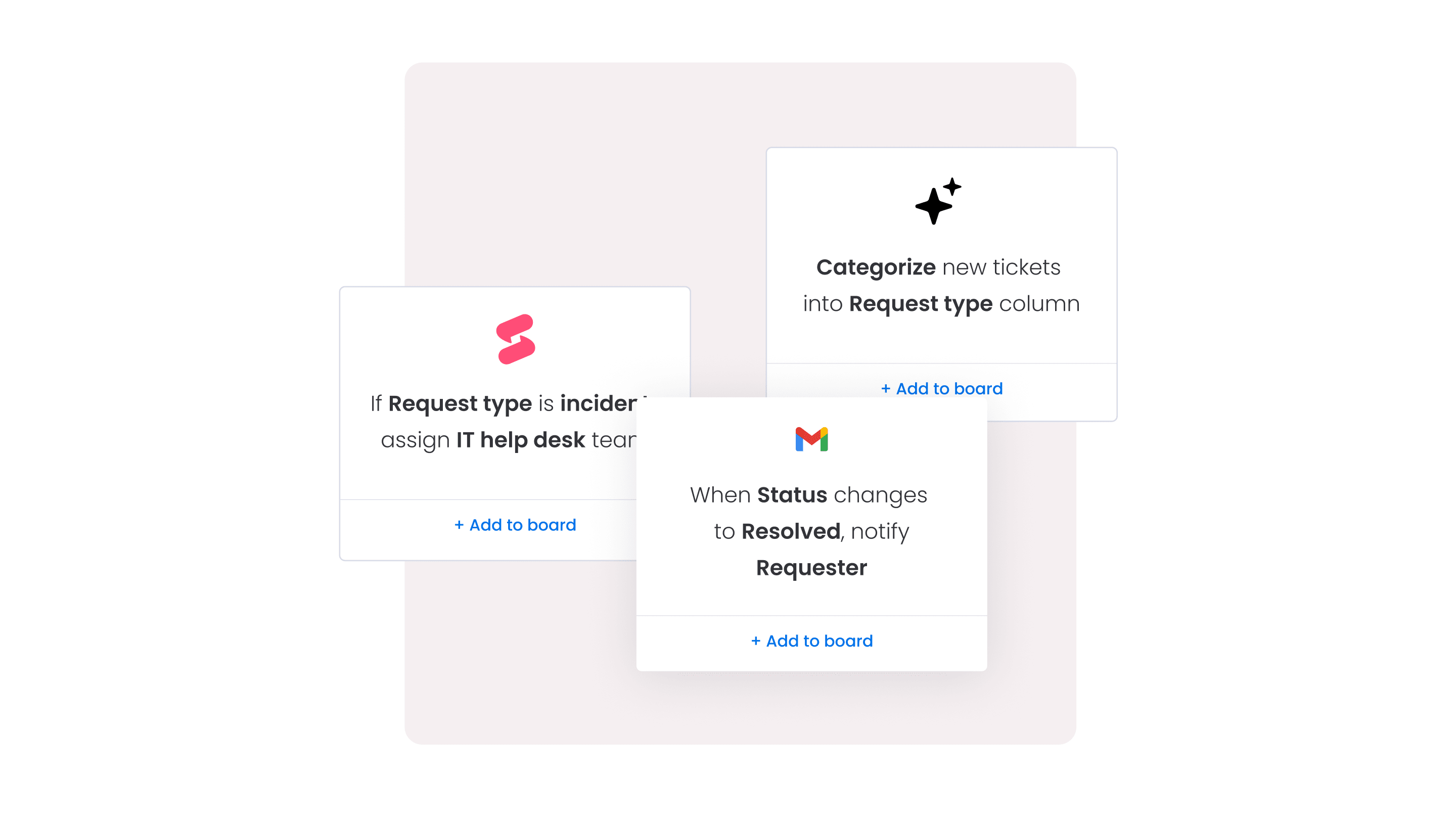
Streamlining your entire digital workspace
An effective digital workspace should be a unified ecosystem, not a collection of disconnected tools. When every asset, user, and process is connected seamlessly, teams can stop wrestling with technology and focus on delivering exceptional work. The goal is to create an operational flow that is both powerful and effortless.
Orchestrating the entire asset lifecycle management of your team’s hardware and software, from initial login to secure retirement, is crucial. This comprehensive management prevents budget waste on unused licenses and ensures everyone has the necessary tools to succeed. It functions as an early warning system, catching potential issues before they become significant roadblocks.
By weaving asset data directly into daily service operations, modern platforms like monday service provide immediate context for every task. Service tickets become enriched with details like hardware specifications and software versions, transforming complex troubleshooting into a quick, straightforward fix.
Accelerating ROI with a modern network inventory application
Securing buy-in for new tools requires demonstrating clear business impact. A modern network inventory platform is not just for cataloging equipment; it is a powerhouse for driving measurable ROI that can shift a department from a cost center to a strategic asset. A platform like monday service connects asset management directly to the bottom line.
This transforms your inventory from a static spreadsheet into an operational playbook. A single source of truth helps eliminate overspending on hardware, avoid costly compliance penalties, and end the chaos of manual tracking. This efficiency frees up your team to focus on strategic work that delivers tangible value.
This is where true acceleration occurs, using intuitive workflows and real-time analytics to drive smarter decisions. Intuitive platforms like monday service provide the visibility to see exactly where money is going, automate processes to boost efficiency, and prove the value of every technology investment.

Moving forward with an all-in-one solution: try monday service
Managing IT services with disconnected tools is inefficient. The future of IT service management lies in bringing inventory and the service desk together on a single platform to create a unified source of truth that powers smarter, faster work. This alignment ensures the entire team is operating from the same strategic playbook.
The decision to consolidate drives three key final outcomes:
- Operational clarity: consolidation goes beyond cleaning up software subscriptions; it provides the clarity teams need to focus on brilliant problem-solving instead of tedious data-hunting.
- Seamless integration: a single platform, such as monday service, is designed to unite everything from service tickets to network assets in one place, allowing for immediate context and faster resolution.
- Sustainable growth: the ultimate goal is a solution that scales with your ambition and boosts efficiency, turning service operations into a high-performing machine that consistently impresses customers.
Finding this unified platform that your team genuinely enjoys using is the ultimate victory.
The content in this article is provided for informational purposes only and, to the best of monday.com’s knowledge, the information provided in this article is accurate and up-to-date at the time of publication. That said, monday.com encourages readers to verify all information directly.
Frequently asked questions
How does network inventory software integrate with existing ITSM platforms?
Network inventory software integrates with ITSM platforms using APIs and pre-built connectors. This syncs asset data directly into service tickets, giving your team the context they need for faster resolutions.
What's the difference between agent-based and agentless network scanning?
The difference between agent-based and agentless network scanning is that agent-based scanning uses software installed on each device for deep data, while agentless scanning discovers devices remotely without installation. The choice depends on balancing ease of deployment with the level of detail your team needs.
Can network inventory software track cloud-based assets and virtual machines?
Yes, it tracks cloud and virtual assets by connecting to cloud provider APIs and virtualization platforms. This gives you a single, unified view of your entire hybrid infrastructure.
How often should automated network scans run to maintain accurate inventory?
We recommend daily scans for critical systems and weekly for most other networks to ensure accuracy. Real-time alerts can also catch immediate changes between scheduled scans.
What security measures protect sensitive network inventory data?
Sensitive inventory data is protected with strong security measures like data encryption, role-based access controls, and detailed audit trails. These features ensure your data is safe and meets compliance standards.
How does AI improve network inventory management accuracy?
AI automates inventory management by identifying and categorizing devices, detecting anomalies, and predicting hardware issues. This boosts accuracy by reducing manual errors and uncovering insights you might otherwise miss.
 Get started
Get started 
